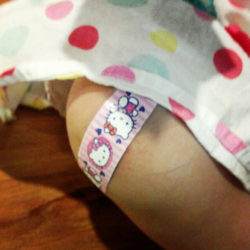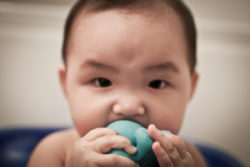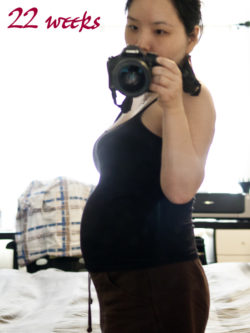Motherhood: The Most Difficult Journey Yet (Part 1)
Breastfeeding.
I always knew I wanted to breastfeed. “Babies are born to be breastfed,” La Leche League tells us. Breastmilk is chock-full of nutrients and antibodies that can’t be replicated with formula. It is linked to less health problems for the baby later in life. It helps the mother bond with the baby, ward off post-partum depression, and even assists in post-partum weight loss. It is free. It is natural. Breast is best.
Breastfeeding came naturally and relatively easy to my mother, and since so many of my pregnancy symptoms had mimicked hers — in addition to the fact that I have her body type — I had figured that it would come easily to me too.
I was wrong.

The type of blissful breastfeeding experience I had hoped to achieve with my daughter (image source)
As soon as Claire returned from the nursery after receiving her first bath, the nurse who brought her in asked me if I wanted to try breastfeeding. “Of course,” I happily obliged.
There is no feeling quite like having your new baby suckle at your breast for the first time. I felt warmth and a flashing sense of euphoria for the first time since giving birth. I was doing it! I was breastfeeding!
The first “milk” that the baby receives from the breast is not actually milk. It is colostrum — a thick sticky substance that contains important antibodies and nutrients that will aid the baby to thrive in the fragile first days of life. I had read about colostrum prior to giving birth, but what I didn’t know was how little there would be of it.
Lesson #1: Colostrum is enough for the first few days.
We kept Claire in my room for the first night, and I took her to my breasts whenever she woke up and cried. Each time, she would find my nipple without a problem and latch on, sucking vigorously for a couple of minutes…then stop and turn away and cry.
I would try to guide her to my breast again, sometimes even forcing my nipple into her mouth. And the same thing would happen over and over again: she would suck for a minute or two, then stop and cry.
I tried massaging my breasts and squeezing my nipples to see if anything was actually coming out — and it was! Except…was that really colostrum? The liquid seemed thin and watery…a far cry from the thick, yellowish substance I had read about.
I reminded myself that every woman is different, and so every breastmilk/colostrum must be different too.
Later, I was to learn that colostrum, no matter how little you produce, is enough for most babies. Newborns’ stomachs are so tiny and the nutrients that colostrum provide so vast that even if your baby loses weight in the first few days after birth, he/she will not be in grave danger.
In other words, I should have trusted that my body will provide what the baby needs.
Lesson #2: Be weary of the “second day freak-out.”
I kept trying to breastfeed Claire for the remainder of that first restless night and through the next day.
But by the end of the second day, I became exhausted at my feeble attempts to provide nutrition for my newborn baby and it was clear that Claire was not happy. In-between each “feeding” (if you can even call it that), she would scream her lungs out while waving her head side to side, her mouth agape in search of satisfactory sustenance.
“She is hungry,” my mother observed.
DON’T YOU THINK I KNOW THAT?!! I wanted to shout at her.
It would be a full week later before I was to read on a parenting board of the “second day freak-out,” where a newborn suddenly realizes, “S#&T! I’m really stuck out here! I’m not going back to the warm and comfy womb!” and proceeds to cry, cry, and cry some more. Refusing to nurse properly and being especially restless and unhappy are all common symptoms of the second day freak-out.
As a mother, I needed to be patient (as hard as it may be) and just suck it up, continuing to offer my breast despite the baby’s refusal and/or protests. But I was not aware of the second day freak-out at the time, and I gave in…
Lesson #3: We should not have supplemented with formula.
After enduring what seemed like countless hours of crying (and having my heart broken over and over again…I was actually feeling physical pain over my heart), I buzzed for a nurse and asked what I should do. “Should I…give her some formula?” I asked.
“If she continues to look hungry and unsatisfied, you can go ahead,” the nurse replied.
We snapped open a single-use bottle of Similac Advance and offered it to Claire. She looked bewildered at first, but began sucking away happily. She finished more than an ounce in that one sitting! And after she was done, she burped and looked happy for the first time in over a day.
She fell asleep soon after, and stayed asleep for almost three hours — the longest stretch that she had slept since being born.
When Claire woke up from her nap, I tried breastfeeding her again. I was dismayed to find the same results: sucking for a minute or two, then stop and cry. Her latch was fine and I could not find any other source of a problem aside from the fact that I seemed to have an overly hungry baby who seemed to be a lazy and impatient suckler.
On that second night, both J and I were so tired and exhausted that we decided to keep the baby in the nursery overnight. We knew that she would be fed formula but we didn’t care. I was still gushing blood, my nipples were starting to become sore and painful, I was overly swollen from 12 hours of IV and 5 hours of pitocin, and I could barely stand up by myself, let alone take care of a newborn through another full sleepless night.
The damage had been done.
To be continued…
Read the rest of the series:
Motherhood: The Most Difficult Journey Yet (Part 3)
Motherhood: The Most Difficult Journey Yet (Part 4)
Motherhood: The Most Difficult Journey Yet (Part 5)



